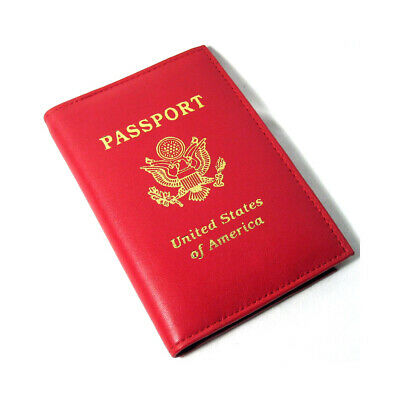-40%
1940 Photos HAND SIGNED BOOK Maps SUYDAN CUTTING Tibet NEPAL Burma ETHIOPIA
$ 66
- Description
- Size Guide
Description
DESCRIPTION:
Up for auction is the original 1940 first HAND SIGNED - AUTOGRAPHED edition , First printing , of the extensive research - Travel - Exploration book "The FIRE OX and OTHER YEARS " by SUYDAN CUTTING which is HAND SIGNED and INSCRIBED by Cutting in 1940 with pen . Memoir/travel narrative of New York explorer, big-game hunter and financier Charles Suydam Cutting (1889-). The 'Fire Ox' years refers specifically to 1937; the chonicle covers many other years, notably travels to Turkestan in 1925, and Ethiopia in 1926-27. Then the journey in 1928-29, with Kermit and Theodore Roosevelt Jr and H. Stevens from Burma through Tali-fu to Tatsienlu (Kanding), Muping, and thence to the Yangtse, and, most famously, to Tibet in 1930, 1935, and 1937. The 'Fire Ox Year" in the book's title refers specifically to 1937; along with 'the Other Years', this book of travels covers adventures of some fifteen years. Text augmented w/maps and many illustrations. Contents are: 1, Green Paradise in Turkestan; 2, The Head-Hunters of Assam; 3, China's Southwest Back Door; 4, Royal Jubilee in Nepal; 5, Cheetah Hunting; 6, Forbidden Cities of Tibet; 7, The Andaman Islands; 8, Celebes & the Elusive Anoa; 9, Inhospitable Glapagos; 10, The Alps of Upper Burma; 11, Ethiopia: Southern Journey; and, 12, Ethiopia: Northern Journey. Indices to Mammals & Birds, and Plants to rear.
Cutting's first major trip took place in 1925 was into Chinese Turkestan, he then traveled to Ethiopia, Assam, Tiber, the Galapagos, Nepal, Upper Burma and eventually into Lhasa. He was joined by his wife which was the first time, as he states, a white woman was allowed to visit the sacred capital of Lamaism. There were hunts for rare animals: the water buffalo of Celebes, the golden monkey of Chinese Tibet, the ibex of the Tien Shan, and much more.
The BOOK Includes NUMEROUS illustrations, portraits, maps, facsimiles. Many PHOTO PLATES on chromo. maps.
The LARGE book was published in 1940 . Written in English .Original cloth HC. No DJ. The book SIZE is around 10" x 7" .
Color frontispiece, 393 pages. index. 128 pages of halftones and 3 full-page color reproductions, 3 maps.
Very good condition
. Tightly bound. End leaves somewhat stained in margins. Rims somewhat stained.
( Please look at scan for actual AS IS images )
Book will be sent in a special protective rigid sealed package.
PAYMENTS
: Payment method accepted : Paypal & All credit cards.
SHIPPMENT
: SHIPP worldwide
of the heavy book via airmail is $ 29. Book will be sent inside a protective packaging
.
Handling around 5 days after payment.
Charles Suydam Cutting, CBE (January 17, 1889 – August 24, 1972) was an explorer, naturalist, society figure, philanthropist, and author. He travelled around the world on numerous expeditions including the Field Museum-Chicago Daily News Abyssinian[1], Kelley-Roosevelts Asiatic, and Vernay-Cutting Expeditions. He was among the first Europeans to enter the forbidden city of Lhasa in Tibet and is credited with introducing the Lhasa Apso breed into the United States. Contents 1 Early life 2 Career 2.1 Exploration 3 Personal life 3.1 Honors 4 References 5 External links Early life[edit] Cutting was born in New York City on January 17, 1889. He was the son of Robert Fulton Cutting, known as the "first citizen of New York,"[2] and Helen (née Suydam) Cutting,[3] who married in 1883.[4] From his father's first marriage, he had an older half-brother, Robert Bayard Cutting, who died in Paris during World War I.[5] Among his full siblings was Helen Suydam Cutting,[6] who married Lucius Kellogg Wilmerding Jr.;[7][8] Elisabeth McEvers Cutting; Robert Fulton Cutting Jr.; Ruth Hunter Cutting; and Schermerhorn Cutting, who died young.[9] Among his many prominent family members was his maternal uncle, Walter Lispenard Suydam, and his paternal uncle, William Bayard Cutting. His mother was a granddaughter of Abraham Schermerhorn and a niece of Caroline Schermerhorn, who was married to William Backhouse Astor Jr.[10] Cutting went to the Groton School and Harvard University, where he graduated in 1912 with an engineering major.[11] Career[edit] After Harvard, he went into engineering sales with the M. W. Kellogg company.[11] He served in the US Army during both world wars, with the rank of Lieutenant colonel in World War II. Prior to the U.S. joining World War II, he was a prominent advocate of arming Britain via The American Committee for the Defense of British Homes.[12] Cutting was a member of The Room, a group of high-society amateur spies organized by Vincent Astor who reported to President Franklin Roosevelt.[13] Exploration[edit] Expedition members, left to right, C. Suydam Cutting, Jack Baum, Wilfred Hudson Osgood, Louis Agassiz Fuertes, Alfred Marshall Bailey, 1927. In 1925, he went on his first expedition to Chinese Turkestan with Kermit and Theodore Roosevelt Jr. After the Roosevelt expedition, he traveled to Ethiopia in 1926, Assam in 1927, Tibet in 1928, 1930, 1935, 1937, the Galapagos Islands in 1930 (sailing aboard Vincent Astor's yacht Nourmahal),[14] Celebes in 1934, Nepal in 1937, and Upper Burma in 1939.[15] In 1935, he went to the forbidden city of Lhasa in Tibet that made him famous as being among the early Westerners[16] to see the city. He was able to gain admittance by currying favor with the Dalai Lama through a series of gifts over a number of years, including a pair of dachshunds, a pair of dalmatians, gold watches and heating appliances.[14] The Dalai Lama also wanted an ostrich, but it was felt that the animal wouldn't have survived the journey. Eventually, the Dalai Lama permitted Cutting and Arthur Stannard Vernay to enter Lhasa and gave Cutting the first Lhasa Apso dogs that entered the U.S. in 1933.[12] After his expedition to Lhasa, Cutting wrote a book that was published commercially about his travels over the course of fifteen years, entitled The Fire Ox and Other Years.[15][17] He also wrote a number of articles for the Museum of Natural History in the 1930s, including articles about his expedition and articles about hunting with a Maharajah's specially trained cheetahs (which was collected in As Told at the As Told at the Explorer’s Club: More than Fifty Tales of Adventure edited by George Plimpton).[12] Cutting is credited with helping to save the Galapagos tortoise from extinction and with bringing the first Lhasa Apso dogs to the United States.[12] Personal life[edit] In 1932,[18] Cutting was married to Helen McMahon (1894–1961),[19] who joined him on his second expedition to Tibet in 1937.[11] Helen was a widow of James Cox Brady Sr. (a son of Anthony N. Brady, the largest shareholder of the American Tobacco Company), who died in 1924.[20] After her death in 1961, he remarried to Mary Percy (née Pyne) Filley (1893–1994)[21] in 1963. Mary, a widow of Oliver Dwight Filley (the grandson of Oliver Filley),[22] was the daughter of Percy Rivington Pyne and Maud (née Howland) Pyne.[23][24] They had a 35-acre estate known as "Old Fort Bay", purchased by Cutting's first wife and her first husband, near Lyford Cay (located on the western tip of New Providence Island in The Bahamas), where the entertained friends, including Gertrude Legendre.[25] Cutting was a close friend of the Duke (formerly Edward VIII) and Duchess of Windsor, who he entertained at their Gladstone, New Jersey home, known as Hamilton Farms, inherited from his first wife.[18] Mary owned her own estate, Upton Pyne.[14] Cutting died at his summer home on Chappaquiddick Island in Edgartown, Massachusetts on Martha's Vineyard on August 24, 1972.[14] He was buried at St. Bernard's cemetery in Bernardsville, New Jersey. His widow continued to live in Bernardsville,[26][27] and then Far Hills, until her death in 1994.[28] Honors[edit] Cutting was awarded a Croix de Guerre (with gold star) and an Order of the Black Star from the French. He was also made an honorary Commander, Most Excellent Order of the British Empire.[12] **** Cutting, C. Suydam (Charles Suydam), 1889-1972 Show/Hide All Variant Names Jump to section: Relations Export Exist Dates 1889 January 17 - 1972 August 24 Biographical or Historical Note abstract C. Suydam Cutting was born in New York City in 1899, and died in 1972. He was the son of Robert Fulton Cutting (1852-1934). Cutting senior was a trustee of the American Museum of Natural History, and a banker; politician; society figure; and philanthropist.(1) C. Suydam Cutting served in both world wars and was a decorated veteran. He had a Croix de Guerre (with gold star) and Croix Noire from the French. He was also an Honorary Commander, Most Excellent Order of the British Empire. (2) He was a prominent amateur athlete (3) and a Harvard trained engineer. His went on his first expedition in 1925 with Kermit and Theodore Roosevelt to Central Asia. Ten years later he went on the expedition to Tibet for which he was best known (4) as one of the first Westerners to see Lhasa. In order to gain favor with the Dalai Lama to gain admittance to Lhasa, he had ongoing exchanges with the Dalai Lama including a series of gifts over some years, among them a pair of dachshunds, a pair of Dalmatians (5). The Dalai Lama gave Cutting the first Lhasa Apso dogs to enter the US in 1933, these established the breed in the US (6). In return, Cutting and Vernay were eventually permitted to enter Lhasa. Cutting’s book, The Fire Ox and Other Years, about this expedition was published commercially. (7) Cutting was also a member of the Explorer’s Club of New York City. Founded in the early twentieth century, The Explorer’s Club promotes expeditions; its members climbed Everest and were the “first” to both poles and the surface of the moon. (8) In a record from the Explorers’ Club he reported that he was a trustee of the American Museum of Natural History and an officer of the New York Zoological Society and recorded his other expeditions to Tibet and other countries in Central Asia, one of which was for the Roosevelt-Simpson Field Museum. (9) Cutting did a great deal of writing. In addition to his book, he wrote a number of articles for Natural History in the 1930’s, including one about this expedition, “In Lhasa-The Forbidden.” His article about hunting with a maharajah’s specially trained cheetahs was collected in As Told at the As Told at the Explorer’s Club: More than Fifty Tales of Adventure, George Plimpton, editor. (10) Cutting died in 1972 in Bernardsville, New Jersey. He was survived by his wife, Mrs. Mary Payne Filley, and his sister, Mrs. Neville Booker. (4) **** Cutting, C. Suydam (Charles Suydam), 1889-1972 Show/Hide All Variant Names Jump to section: Relations Export Exist Dates 1889 January 17 - 1972 August 24 Biographical or Historical Note abstract C. Suydam Cutting was born in New York City in 1899, and died in 1972. He was the son of Robert Fulton Cutting (1852-1934). Cutting senior was a trustee of the American Museum of Natural History, and a banker; politician; society figure; and philanthropist.(1) C. Suydam Cutting served in both world wars and was a decorated veteran. He had a Croix de Guerre (with gold star) and Croix Noire from the French. He was also an Honorary Commander, Most Excellent Order of the British Empire. (2) He was a prominent amateur athlete (3) and a Harvard trained engineer. His went on his first expedition in 1925 with Kermit and Theodore Roosevelt to Central Asia. Ten years later he went on the expedition to Tibet for which he was best known (4) as one of the first Westerners to see Lhasa. In order to gain favor with the Dalai Lama to gain admittance to Lhasa, he had ongoing exchanges with the Dalai Lama including a series of gifts over some years, among them a pair of dachshunds, a pair of Dalmatians (5). The Dalai Lama gave Cutting the first Lhasa Apso dogs to enter the US in 1933, these established the breed in the US (6). In return, Cutting and Vernay were eventually permitted to enter Lhasa. Cutting’s book, The Fire Ox and Other Years, about this expedition was published commercially. (7) Cutting was also a member of the Explorer’s Club of New York City. Founded in the early twentieth century, The Explorer’s Club promotes expeditions; its members climbed Everest and were the “first” to both poles and the surface of the moon. (8) In a record from the Explorers’ Club he reported that he was a trustee of the American Museum of Natural History and an officer of the New York Zoological Society and recorded his other expeditions to Tibet and other countries in Central Asia, one of which was for the Roosevelt-Simpson Field Museum. (9) Cutting did a great deal of writing. In addition to his book, he wrote a number of articles for Natural History in the 1930’s, including one about this expedition, “In Lhasa-The Forbidden.” His article about hunting with a maharajah’s specially trained cheetahs was collected in As Told at the As Told at the Explorer’s Club: More than Fifty Tales of Adventure, George Plimpton, editor. (10) Cutting died in 1972 in Bernardsville, New Jersey. He was survived by his wife, Mrs. Mary Payne Filley, and his sister, Mrs. Neville Booker. (4) *** ebay5528




















